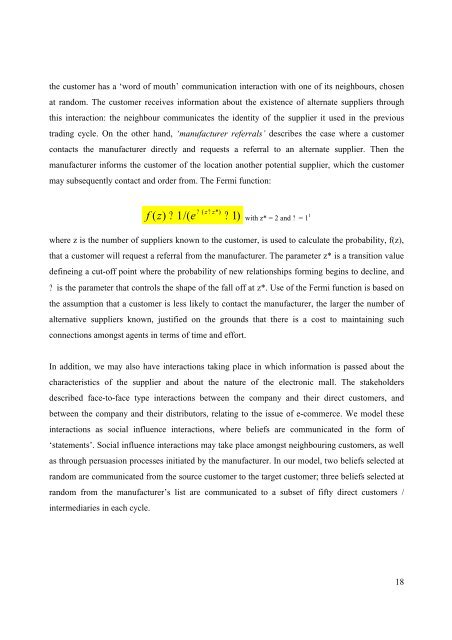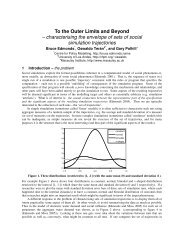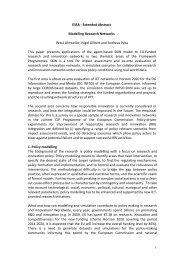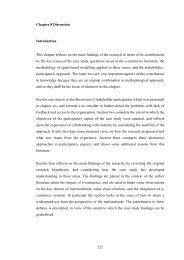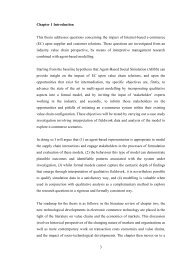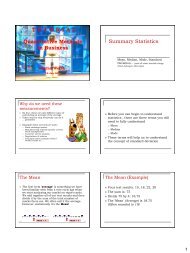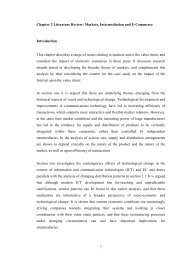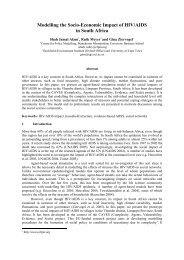1 Agent-Based Modelling Incorporating Qualitative and Quantitative ...
1 Agent-Based Modelling Incorporating Qualitative and Quantitative ...
1 Agent-Based Modelling Incorporating Qualitative and Quantitative ...
You also want an ePaper? Increase the reach of your titles
YUMPU automatically turns print PDFs into web optimized ePapers that Google loves.
the customer has a ‘word of mouth’ communication interaction with one of its neighbours, chosen<br />
at r<strong>and</strong>om. The customer receives information about the existence of alternate suppliers through<br />
this interaction: the neighbour communicates the identity of the supplier it used in the previous<br />
trading cycle. On the other h<strong>and</strong>, ‘manufacturer referrals’ describes the case where a customer<br />
contacts the manufacturer directly <strong>and</strong> requests a referral to an alternate supplier. Then the<br />
manufacturer informs the customer of the location another potential supplier, which the customer<br />
may subsequently contact <strong>and</strong> order from. The Fermi function:<br />
f ( z)<br />
?<br />
1/( e<br />
? ( z?z*)<br />
?<br />
1)<br />
with z* = 2 <strong>and</strong> ? = 1 1<br />
where z is the number of suppliers known to the customer, is used to calculate the probability, f(z),<br />
that a customer will request a referral from the manufacturer. The parameter z* is a transition value<br />
defineing a cut-off point where the probability of new relationships forming begins to decline, <strong>and</strong><br />
? is the parameter that controls the shape of the fall off at z*. Use of the Fermi function is based on<br />
the assumption that a customer is less likely to contact the manufacturer, the larger the number of<br />
alternative suppliers known, justified on the grounds that there is a cost to maintaining such<br />
connections amongst agents in terms of time <strong>and</strong> effort.<br />
In addition, we may also have interactions taking place in which information is passed about the<br />
characteristics of the supplier <strong>and</strong> about the nature of the electronic mall. The stakeholders<br />
described face-to-face type interactions between the company <strong>and</strong> their direct customers, <strong>and</strong><br />
between the company <strong>and</strong> their distributors, relating to the issue of e-commerce. We model these<br />
interactions as social influence interactions, where beliefs are communicated in the form of<br />
‘statements’. Social influence interactions may take place amongst neighbouring customers, as well<br />
as through persuasion processes initiated by the manufacturer. In our model, two beliefs selected at<br />
r<strong>and</strong>om are communicated from the source customer to the target customer; three beliefs selected at<br />
r<strong>and</strong>om from the manufacturer’s list are communicated to a subset of fifty direct customers /<br />
intermediaries in each cycle.<br />
18


